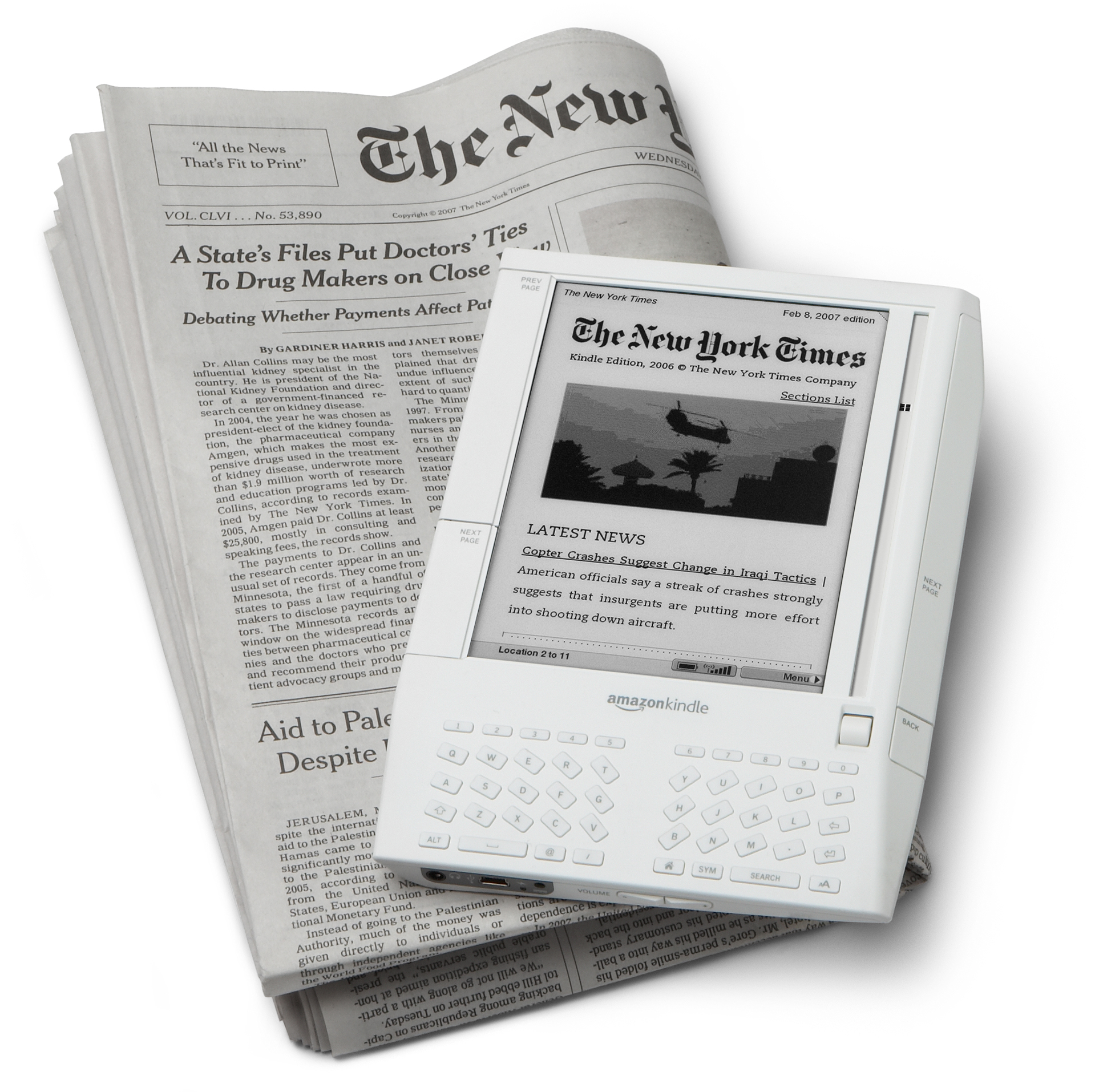
Once more into the breach! Amazon is swimming upstream by launching an electronic book device called the Kindle (as in, kindle your imagination). Amazon’s e-book takes a page from Apple’s marketing approach by tying the device to Amazon’s store and hoping that its improved technology will finally make the e-book a practical reality.
We’ve been trying out a Kindle today and generally like the hardware, a svelte, 10.3-ounce hand-held with a 6-inch (measured diagonally) screen. The display uses a technology dubbed electronic ink. Unlike LCD screens, there’s no back light (so less power consumption). Instead, the black-and-white display relies on charged particles for a high-contrast image; think fancy Etch A Sketch. It’s not as clear and crisp as the printed page, but then again, what is?
More important, the Kindle includes a free wireless connection for downloading books using a version of a high-speed cellular data format called EVDO. So you can download books (or magazines or newspapers) while you’re riding in the backseat of a car or on a train. (You can also order them from a PC online and have them sent directly to your Kindle.) It can store about 200 books with the 180 MB of memory that's available for storage, although you can add gigabytes more via an SD memory card slot.
Much of Kindle works as advertised. We downloaded Neal Stephenson’s 1,000-page-plus opus Cryptonomicon in less than a minute to the e-book over the wireless EVDO connection. We also found many books worth purchasing from the 90,000-volume online store, although we should admit the very first title we looked for, Thomas Pynchon’s Against the Day, is not available as a Kindle book.
The built–in dictionary works well and it’s a simple matter moving from a book to the store or finding particular titles stored on the device. However, the Kindle—like any new product--has some drawbacks that may prevent it from catching fire:
Flipping pages is an awkward affair. No matter how we hold it, we keep inadvertently hitting the “next” page buttons and can’t reprogram or turn one off so that we can hold the e-book more comfortably. This is a major drawback since comfort is essential for a pleasant reading experience; indeed there’s no way to hold the book without hitting some key or button. Of course, a quick software upgrade to allow readers to shut off either the left hand or right hand “next” button would solve this easily.
It keeps flashing us. Every time you flip to the next page, the e-ink display flashes black, which so far has proven to be very distracting. (More time spent reading the Kindle may diminish this effect.)
It’s wicked expensive. The Kindle is $399, and one of the main factors that killed earlier e-books was price. If this could be had for $100, then Amazon would have a whopping product on its hands. Furthermore, while many of the e-books cost less than their paperback brethren, they are not offered at enough of a discount. Many cost $9.99, for example, but at that price, I’d rather have the paperback copy in my hands. (Remember, when iTunes started, a full digital CD could be had for about half the price of the real thing.)
Free wireless…sort of. If you buy a book on Amazon, sending it wirelessly to your Kindle is indeed free. However, if you have a personal file or free article in PDF format that you want to read on your Kindle and send it via e-mail to your device, it will cost you 10 cents per attachment.
The four-year-old girl’s question: “Does it read books to you?” No. So our four-year-old tester’s follow-up question was, “Then why do you need an e-book?” Hmmmm, memo to self: add text-to-speech feature.
We’ll continue to live with the Kindle to see how it does in daily life. For example, we can’t vouch for how easy or difficult it is to read its screen in direct sunlight mainly because, well, here in New York City we’re facing pewter skies for the next couple of days. Let’s hope the Kindle has a sunnier future.
. J-Q.com For additional comments on the Kindle, see JQ's Blog
|
